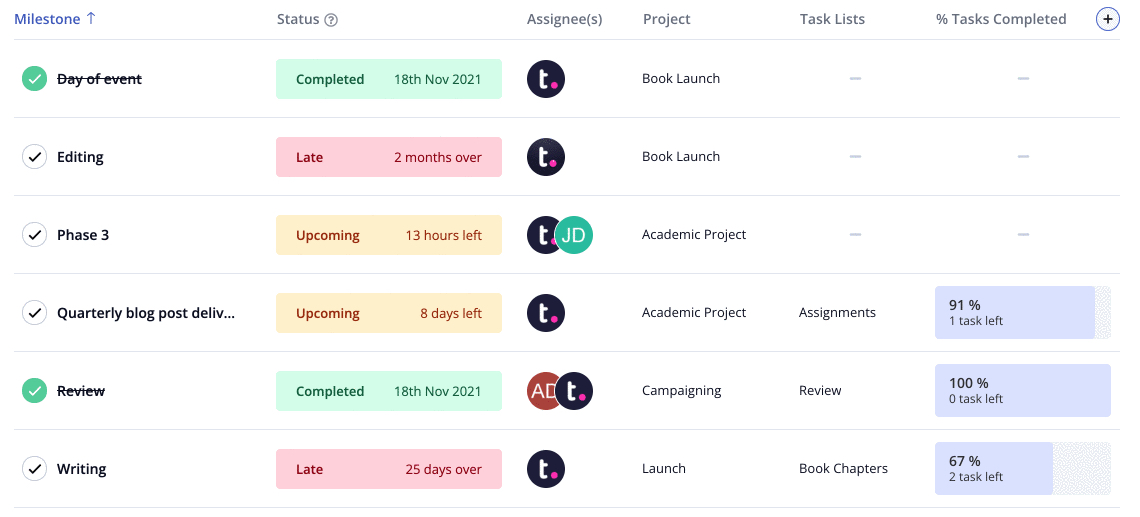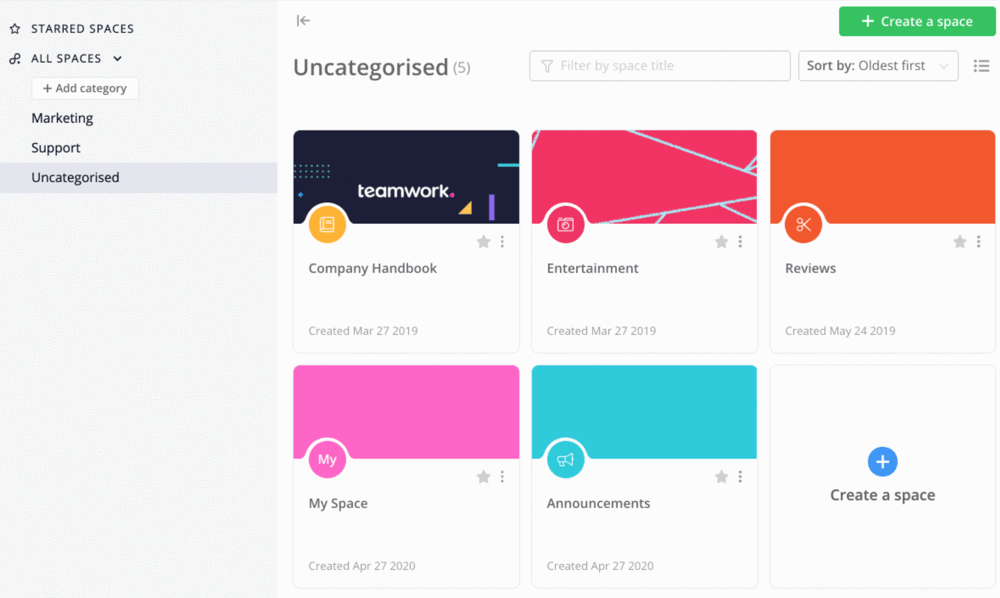Table of Contents
What is a project management plan?
A project management plan is a comprehensive document that outlines how a project will be executed, monitored, controlled and closed. For project managers and their teams, it's the ultimate toolkit for achieving their objectives while managing day-to-day pressures such as time, cost, scope, resourcing and risk. This guide outlines what a project management plan is used for, why it's important, and offers a step-by-step guide on how to make one that actually works.
What is a project management plan used for?
Your project plan document is where you go deep on the ins, outs, overs, and unders of your project. It's where you break this vision down into the day-to-day execution of your project, covering everything you need to do to reach your project goals.
A detailed project plan will plot out everything from timelines to budget, resourcing to deliverables, and more, giving you a blueprint of what needs to be done (and when) that you can use to guide — and assess — your project.
What are the main elements of a project plan?
The key components of a project management plan are:
Project Objectives
Scope Statement
Schedule Management
Cost Management
Resource Management
Communication Plan
Stakeholder Management
Procurement Management
Closure Criteria
Project Organization
How to write a project management plan
Ready to get down to business? Here are 5 key things you need to do when writing a project plan.
1. Identify the baselines for your project
Before you begin writing a project plan, you need to make sure you have the basics down. Start by identifying the baselines for the project’s scope, schedule and cost, as the rest of your project planning will need to fit in around those constraints.
As mentioned above, these baselines should already be roughly outlined in your project charter — but here’s where you really start to map them out and create accurate estimates. And the more detailed, the better, because these are what you’ll be using for comparison to measure how your project performs.
2. Identify your project dependencies
Or in other words, ask yourself: what needs to happen before this other thing can happen? Identifying your project dependencies at the outset of your project means you can plan your timelines more efficiently, spot potential blockers, and ensure that you avoid unnecessary delays.
3. Identify project stakeholders
You’ll already have done the groundwork for this in your stakeholder analysis, but as you flesh out your project management plan and think through the phases of your project in more detail, you’ll likely start to find more project stakeholders at each phase.
Now is also a good time to go deeper on which stakeholders need to be informed and involved at which stages, for a more comprehensive stakeholder management plan you can use at each phase of your project.
4. Identify project milestones
What are the key markers of your project’s progress? It can be a concrete deliverable, the end of a phase in a stage-gate process — whatever milestones make sense to you, breaking your project down into manageable chunks, each with a defined goal, helps to keep the team motivated, allows you to celebrate each achievement, and signposts how the overall progress is coming along. Learn more about using Milestones here.

5. Identify who’s responsible for what
Once you start to get a big-picture understanding of the work that’s needed and the resources you have to complete it, you can start deciding who should do what. Giving each item an owner is essential to getting things done. No more “oh, was I supposed to do that?” — once you identify who’s responsible for what, you can ensure accountability and transparency.

The 5 Stages of Team Development
All teams develop according to some natural patterns and using that knowledge, you can offer some guidance to build the kind of team that communicates well and finds better ways to collaborate and achieve the goals you’ve established. Here’s what you need to know.
Sample project management plan outline
Now let's go through a sample project plan. In the below example, we highlight the main sections of the plan and what needs to be included in each one to set your project up for success.
Section 1: Executive summary
The executive summary offers a concise overview of the entire project. It includes key highlights such as the project's purpose, objectives, scope, timeline, budget, and major stakeholders. It's often the first section stakeholders read to get a high-level understanding of the project.
Section 2: Project introduction
This section sets the stage by providing context and background information about the project. It explains why the project is being undertaken and introduces the main objectives and scope of the project.
Section 3: Project objectives
Here, the project's specific goals and objectives are outlined in detail. Objectives should be SMART (Specific, Measurable, Achievable, Relevant, and Time-bound) to provide clarity and guidance.
Section 4: Project scope
The scope section defines what is included and excluded from the project. It helps prevent scope creep by establishing clear boundaries and also mentions any assumptions and constraints that may affect the project.
Section 5: Schedule management
This section details the project's timeline, including milestones and deadlines. It breaks down the project into tasks and identifies task dependencies. Often, visual representations like Gantt charts are used for clarity.
Section 6: Cost management
Here, the project budget is presented, including cost estimates for various project components. It may also outline cost control measures to ensure the project stays within budget.
Section 7: Quality management
This section focuses on the quality standards and objectives for the project. It describes quality control and assurance processes, as well as any inspection and testing procedures that will be implemented.
Project management template
Save time on setup without sacrificing attention to detail. With our project management template, you can quickly create project management plans that help you complete your project on time and on budget.
Section 8: Resource management
In this section, the project team is introduced, and roles and responsibilities are defined. It addresses resource allocation, scheduling, and, if applicable, procurement needs.
Section 9: Risk management
The risk management section identifies potential risks and uncertainties that could impact the project. It discusses risk assessment, prioritization, and mitigation strategies to reduce the impact of these risks.
Section 10: Communication plan
The communication plan outlines how project information will be shared with stakeholders and team members. It specifies communication methods, frequency, and reporting channels to ensure effective communication throughout the project.
Section 11: Stakeholder management
This section lists project stakeholders and analyzes their interests, influence, and expectations. It also outlines strategies for engaging and managing these stakeholders to ensure their needs are addressed.
Section 12: Procurement management
If procurement of goods or services is involved, this section explains the procurement strategy, vendor selection criteria, and how contracts will be managed.
Section 13: Change management
Change management procedures are detailed here, including how changes to the project scope, schedule, or other aspects will be requested, evaluated, approved, and communicated.
Section 14: Closure criteria
Criteria for determining when the project is complete and ready for closure are specified in this section. It may also include plans for project handover and post-project evaluation.
Section 15: Project organization
This section describes the project team's structure, roles, and responsibilities, ensuring everyone understands their positions and reporting lines. It may also mention external stakeholders and their roles if applicable.
Using our project management plan template to build your project plan
Once you’ve documented your project management plan, bring it to life with a project management tool that will help you to stay on track, keep your team accountable, and promote transparency.
Here are 3 ways you can use Teamwork.com to supercharge your project management plan.
Add your supporting documentation to Teamwork Spaces

Use the Teamwork.com and Teamwork Spaces integration to link a project in Teamwork.com with a space in Teamwork Spaces, so your important project documents are only ever a click away.
Some documents you might want to add in addition to your project charter and project management plan include:
Scoping documents
Risk assessments
Change management plans
SOPs for important project processes
List of stakeholders and their roles
Outline of approval processes
Communications management plan
Any other best practices documentation or supporting info as necessary
You can even embed task lists into your pages and mark tasks as complete right from Teamwork Spaces, so you can keep work flowing without even needing to switch tabs.
Start adding your Milestones
Break down your work into Milestones and task lists that are going to help you reach them. With Teamwork.com, you can assign an owner to each Milestone, map out your Milestone due dates and see them represented in the project calendar, and even get a full change history for milestones so you can track any edits.
Visualize your task dependencies with a Gantt chart
Gantt chart-style views are a useful way to get a visual representation of your tasks and their dependencies, allowing for better scheduling and resourcing. In Teamwork.com, you can drag and drop to quickly rearrange your project schedule, without throwing everything out of order or straying off-plan.
Remember: software should support the way you work, not dictate it. So regardless of methodology or team type, create a project plan that works for you and your team — and find a tool that helps you put it into action.
Use our project plan template
Now that you know how to create a project management plan that actually works, you’re ready to implement using our team management software. To help you get up and running quickly, we’ve created a ready to use project plan template. Our project template will help you quickly create project plans that ensure all of your projects are completed on time and on budget
Project management plan: FAQ's
What is a project management plan template?
A project management plan template is a pre-designed framework that provides a structured format for creating a project management plan. It serves as a starting point for project managers and teams to develop their specific project plans, saving time and ensuring that key project management components are properly addressed.
How can a template help you build a great project management plan?
A template can help you build a great project management plan by saving time, ensuring comprehensive coverage of project management aspects, and incorporating industry best practices and visual aids for clarity. They also support collaboration, version control, and customization to fit the unique needs of each project, making them a valuable tool for project managers in achieving successful project outcomes.
What is the main purpose of a project management plan?
The main purpose of a project management plan is to provide a comprehensive and structured roadmap for successfully executing, monitoring, controlling, and closing a project. It serves as a central document that outlines project objectives, scope, schedule, budget, quality standards, resource allocation, risk management strategies, and communication approaches.
What tools do I need to help manage a project plan?
To effectively manage a project plan, you'll need a set of tools and software that cover various aspects of project management. These include project management software, communication and collaboration platforms, file and document management solutions, time and task tracking apps, and budgeting and financial management tools.
What steps are involved in the project planning process?
The steps involved in the project planning process include defining specific project objectives and scope, identifying deliverables and key milestones, budgets, risk assessment and quality control measures. It should also include a communication plan and stakeholder engagement strategies.


